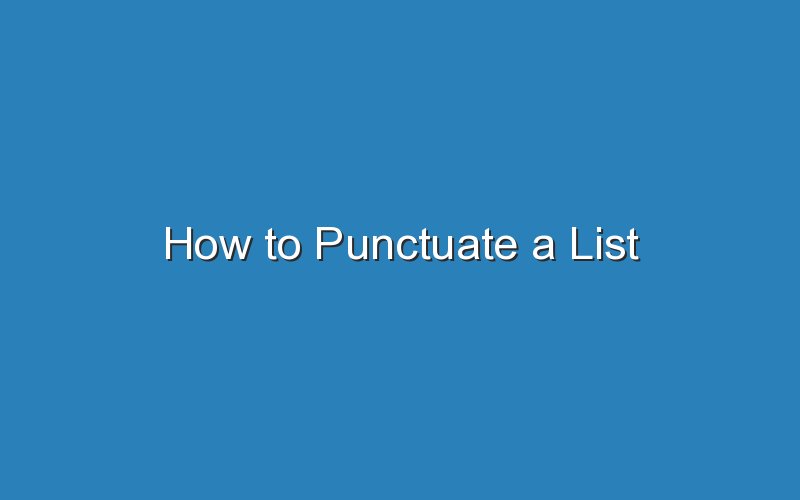The sentence below uses a colon to connect two independent clauses. It is not a typical punctuation rule, and it can come across as too pretentious or fussy. Instead, use a comma or a semicolon to separate the two parts of the sentence. Then, capitalize the second part of the sentence. The next time you write a similar expression, use a colon instead of a comma.
In addition to using a semicolon to separate lists, you can also use a comma to separate the list items. This method is typically used for in-sentence lists. In such instances, a colon can introduce an item or a list after a complete sentence or independent clause. If you are not sure about the best way to punctuate a list, here’s a guide:
If a list isn’t a complete sentence, it should be separated by commas or semicolons. Lists within a sentence should be placed at the end of the sentence. A colon can also introduce an item or list after a complete, independent clause. If the list contains multiple items, use a colon. Then, place a period after each item.
If a list is part of a complete sentence, it must be introduced by a comma or a semicolon. If the list is part of a partial sentence, a colon should introduce it. If the list is an independent clause, a colon can introduce it after the complete sentence. When a list is an independent clause, a colon should be used to introduce the item or list.
If a list is not a complete sentence, use a comma or a semicolon. If it is a complete sentence, a list should be placed at the end. If a list is part of an independent clause, a colon can introduce an item or list after a complete sentence. This is the correct phrasing for a list.
If the list is part of a complete sentence, list items should be punctuated with a comma or a semicolon. If the list is part of a complete-sentence, a list should be placed after an independent clause. Afterwards, a colon can introduce an item or list after a full-sentence or an independent clause.
In-sentence lists should be punctuated with a semicolon or a comma if they are not complete sentences. If the list is part of a complete sentence, a colon or a semicolon can introduce the item or list after the complete sentence or the independent clause. When a list is not a complete or an independent clause, a colon or a comma can be used after it.
Regardless of whether your list is part of a complete sentence, list items should be punctuated with a semicolon or a comma if they are not. If they are part of an in-sentence list, a colon or a comma is appropriate. If the list is an in-sentence list, a semicolon is appropriate in this situation.
If your list is in a complete sentence, place a semicolon or comma after it. If your list is part of a sentence, place the list or item at the end of the sentence. If the list is part of a series of independent clauses, a colon can introduce a single item or a group of items or a set of sentences.

